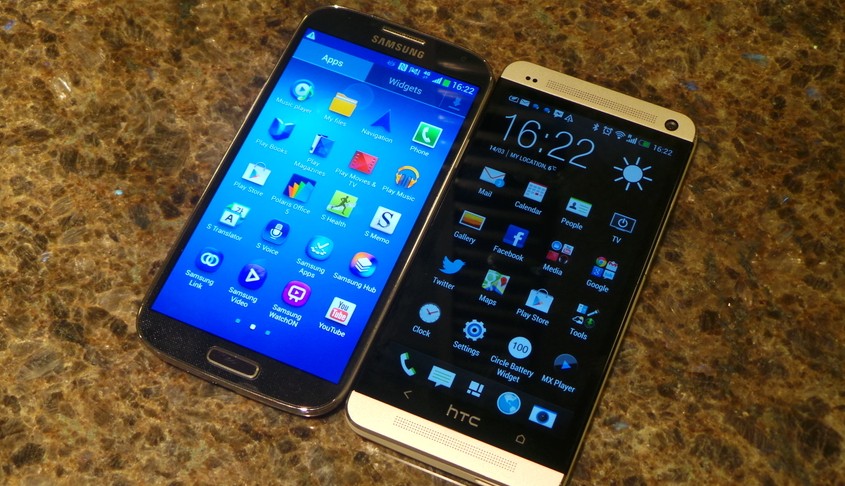 Apple, eat your core out.
Apple, eat your core out.
That was the underlying message when Samsung last week unveiled its most anticipated device yet — the Galaxy S 4. As the first phone to boast an 8-core processor, the Galaxy S 4 will give the iPhone some serious competition in its bid to overtake Samsung’s title as the world’s number one selling smartphone.
The Galaxy S 4’s spec list is impressive. The phone has a 5-inch full HD Super AMOLED 1920 x 1080, 440ppi display (on par with Sony’s new Xperia Z) with Gorilla Glass 3, 2GB of RAM, 1.6GHz octo-core Exynos 5 processor for most major markets (some regions will get a 1.9GHz quad-core Snapdragon processor), 4G LTE where available, 13 MP and 2 MP cameras that can take photos at the same time, and Android 4.2.2 (Jelly Bean) on board. At just 7.9mm thick (.31 inches, about the same as the iPhone 5), the S 4 is thinner than the Galaxy S3 and has a thinner bezel, so it may feel even smaller, despite its slightly larger screen size. The S 4 has an 2,600mAh battery and promises — of battery life.
For some people, the S 4’s coolest features might be Smart Pause, which uses the phone’s camera to read your eyes and keep the screen lit if you are still looking at it; Smart Scroll, which allows you to scroll pages with your eyes; and Air View, which lets you hover your finger over the screen without touching it, to swipe through screens, enlarge photo thumbnails, or other functions.
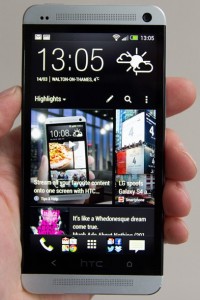 But HTC, the Taiwan based smartphone maker hoping to win back buyers with its redesigned HTC One, was quick to criticize the Galaxy S 4 as poor build quality. HTC can brag with confidence, because critics have unanimously praised the HTC One as one of the best designed smartphones ever. The One also has an impressive spec list: Qualcomm’s new quad-core, 1.7GHz Snapdragon 600 processor, 2GB of RAM, a 1920 x 1080 display with 468ppi, Bluetooth 4.0, NFC, Wi-Fi, DLNA, Miracast, accelerometer, gyroscope, GPS and IR blaster.
But HTC, the Taiwan based smartphone maker hoping to win back buyers with its redesigned HTC One, was quick to criticize the Galaxy S 4 as poor build quality. HTC can brag with confidence, because critics have unanimously praised the HTC One as one of the best designed smartphones ever. The One also has an impressive spec list: Qualcomm’s new quad-core, 1.7GHz Snapdragon 600 processor, 2GB of RAM, a 1920 x 1080 display with 468ppi, Bluetooth 4.0, NFC, Wi-Fi, DLNA, Miracast, accelerometer, gyroscope, GPS and IR blaster.
Although the HTC One’s back camera is only 4 megapixels (the front is 2.1 MP), HTC claims it can take better and faster photos than higher-res cameras because each larger pixel apparently soaks up more light, and less pixels means less processing power for taking photos or applying filters. The HTC One has 2,300mAh battery, and at 9.3mm, the phone is a bit thicker than the Galaxy S 4.
The HTC One and Galaxy S 4 will be available on major carriers in most markets in April… stay tuned for exact release dates.
To help you decide which is the better Android superphone, we’ve rounded up the top early reviews of both new handsets below. Which one excites you the most, the Galaxy S 4 or HTC One? Or, is your heart set on another phone?
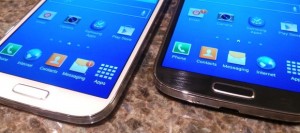 Samsung Galaxy S 4 reviews:
Samsung Galaxy S 4 reviews:
Associated Press:
“In my testing, I found that the phone sometimes registered a close hover as a touch. …Very few applications react to [the hovering feature] at all. On the S 4, the Email app will show previews, but the Gmail app won’t. The built-in Gallery app will show picture previews, but other photo apps won’t. I suspect users will get tired of trying to hover with their fingers and give up on the whole thing. …It’s more like Samsung is throwing a bunch of technologies into the phone to see what sticks.”
CNET:
“Based on my brief time with the Galaxy S4, very few of the extensive list of enhancements stood out as a killer, must-have, cannot-possibly-live-without feature. The TV control app that works with the IR blaster is perhaps one exception (the HTC One has this, too), as are a handy translation tool and eye-tracking and gesture capabilities that allow you to pause a video when you stop paying attention and let you hover your finger over an item to preview what it is. Many other software additions are semi-interesting ideas that some power users may enjoy once they’ve figured them out, but which will hardly convince a prospective buyer to pick the GS4 over, for instance, the HTC One, Nokia Lumia 920, or iPhone 5.”
Engadget:
“The Galaxy S 4 is a testament to Samsung’s ethos: an unabashed focus on features over design, and an immense desire to fork Android as best it can. Still, as much as its add-ons differentiate this handset from last year’s, we can’t shake the feeling that the GS 4 falls flat next to the competition.”
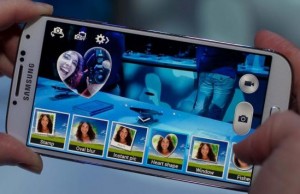 Pocket-Lint:
Pocket-Lint:
“The mode wheel from the Samsung Galaxy Camera has been added, so that you can add effects to your photos more easily. We particularly like the picture-in-picture modes for stills and video – Dual Shot and Dual Recording. These allow you to add a shot or video clip using the front-facing camera – in several styles – to one taken with the rear, in real time. That way you can see your reaction at the time of the shot or recording.”
TechRadar:
“When you pick up the Samsung Galaxy S4 for the first time you won’t be blown away. …Once you dive into the handset, the new features, the integrated Samsung Hub that brings together all your media, book, gaming and educational needs under one roof, and enhanced camera do impress, but do scream of refinement over big innovation. The camera has a load of new tricks we can’t see that many people using, but then again it has improved the basics very well.”
The Daily Beast: (S4 vs iPhone 5)
“Because I am usually eating Cheetos when I look at my phone. It would change my life to be able to use my phone without actually touching it. I would eat way more Cheetos. …[Also], the Galaxy S4 has a nifty new feature called S Health, that uses its accelerometer to track your steps or cycles, or maybe even breast strokes one day. If only it would deliver a shockwave every time I reach for a bag of Cheetos.”
The Verge:
“From our limited testing, ‘Smart Pause’ and ‘Smart Scroll’ skew more toward gimmick — they’re supposed to detect your eyes, and either pause your movie when you look away or scroll when you reach the bottom of a page, but neither worked much at all in our time with the GS4. …The Eraser mode is one of our favorite [features]: it takes a series of quick pictures, then automatically detects motion in the background and lets you seamlessly remove it. Goodbye, photo bombers.”
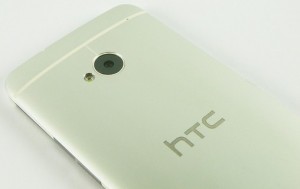 HTC One (2013) reviews:
HTC One (2013) reviews:
CNET:
“In general, the image quality from the One’s camera isn’t good enough to justify HTC’s decision to lower the megapixel count to four. It’ll do fine for some snaps of your friends, but don’t expect to become the next Ansel Adams. It’s in its software, however, that the One’s camera plays a much better game. …The super-charged processor and metal construction are more reasons to be excited, but the lack of any standout feature means we’d hold off buying it until we’ve reviewed the rest of the year’s high-end Android phones.”
Engadget:
“We’re smitten with the One’s design for all sorts of reasons: it’s sexy, it feels secure in the hand and the combination of unibody aluminum and polycarbonate ensures the phone won’t shatter into a million pieces if it were to hit the ground. …Call quality was solid, but what really stood out to us was what we didn’t hear. …BlinkFeed takes over as the [One’s] default home page. Thanks to its many tiles of various shapes and sizes, the tool is reminiscent of Flipboard, Motorola’s Blur UI and even Windows Phone. BlinkFeed performs well, but it adds to the feeling of unnecessary bloat and can’t be disabled.”
Gizmodo:
“This thing is absurdly fast. …Apps open faster than we’ve seen on any other handset. Another pleasant surprise: the camera’s UltraPixels actually live up to the hype. In our testing the One performed as well as if not better than the top smartphone shooters. …As good as the camera is for stills, it takes very lackluster video. The results aren’t particularly sharp and details get lost. …As almost near-flawless as the hardware feels, the software seems rushed and unfinished, like a public beta. For BlinkFeed, why borrow from Windows Phone’s Metro tiles but not copy the most useful elements? Why not include incoming messages, or allow you to set permanent tiles for specific contacts? It’s pretty, but it’s basically all distraction and no utility.”
Pocket-Lint:
“The design, the refreshes made to HTC Sense, and the power on offer make this among the best that Android has on offer. …The headline features might obscure those things that are important. Blink Feed might not be for everyone, the camera isn’t so dramatically different, even if the remixed results are. But some of the phone’s core features really shine: the display is fantastic, there’s plenty of power and the sound quality, be that for calls or music, is outstanding.”
SlashGear:
“The display is beautiful, the UltraPixel camera technology and Zoe system both ambitious but capable of hugely engaging results, and the performance superlative. Meanwhile, HTC Sense has finally rediscovered its roots, and evolved with BlinkFeed into a legitimately useful and compelling interface – one which didn’t instantly leave us pining for unmodified Android. Nor is the One perfect, however. The battery life is merely average. …HTC may not be the first to eschew removable storage and a replaceable battery, but we still don’t like it when they’re omitted.”
TechRadar:
“4.5/5: The camera is a great addition for on the spot shooting, [but] if you want to take the photos and blow them up somewhere, it’s not the phone for you. Battery life is still poor and there’s still no expandable memory. HTC Zoe sucks up a lot of space with the reams of photos it needs to take, not to mention how cluttered that makes the photo folder. …[But] we can’t help but recommend the HTC One. There’s no doubt that Samsung makes better phones for the power user, at least in terms of battery consumption, but they’re also made of plastic, where the One is probably the most premium-feeling.”
The Verge:
“8.3/10: I love the look and feel of the One. HTC gets what Samsung doesn’t — fit and finish really matter, and great hardware makes the One pleasant to use in a way Samsung’s slippery plastic frames just aren’t. …By itself, the screen makes the One a great option for watching movies or playing games, but the front-firing speakers above and below the display take things to a whole other level. More importantly, they get loud enough that you don’t have to hold the phone up to your ear to hear anything. …The pictures I took on the One just don’t look very good. Nothing looks sharp or crisp, … [and] when you zoom or crop, photos lose a lot of their luster.”




